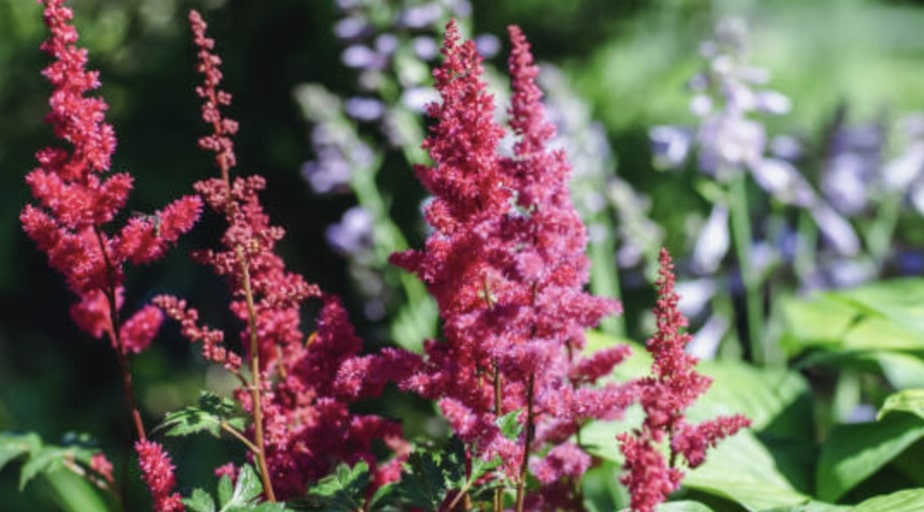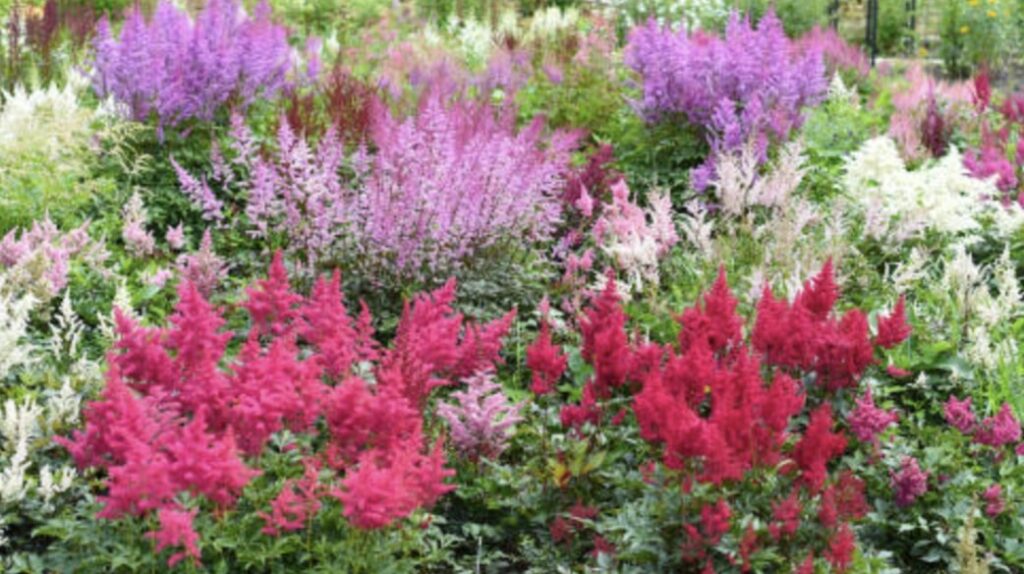As if coming out of a winter wonderland village, astilbes are these lovely enchanting flowers in the shape of small pine trees with cream, lilac, red, white, or pink shades.
Having them is fantastic because, for one reason, they’re super easy to care for. And two, they complement other flowers and plants around them, making them a welcoming garden sight.
Look below for some tips and reminders on how to take care of them so that they’ll continue to brighten your abode through the year.
Growing Astilbe Flowers


Astilbe plants are delicate and prefer little and indirect sun. You can grow them in a dappled spot or partially shaded area that allows them to get just one or two hours of sun every day.
Preparing the ideal soil is important for this flower too. It should be rich and fertile to allow air, water, and nutrients to transfer to the plants easily.
However, if your soil is hard and poor, till and dig a little and add some organic matter in the top one to two inches of the soil a few weeks before setting the plants into the soil.
Furthermore, improve the soil’s depth by 8 to 12 inches to give the flower roots plenty of space to grow. One way to do this is to mix compost or organic matter thoroughly into the soil, not just bury it underneath, to be effective and conducive to the flowers’ growth.
Also, ensure that the crown (the stem immediately above the roots) is level with the top surface of the soil, then water it until moist.
Caring for Astilbe Flowers


After being established, astilbe flowers should be watered often—and even more so if it is placed in a hot and sunny location. Just remember to always keep the soil moist.
By the way, you also have to be aware that planting them in a hot location will make their leaves burnt and/or dry, which will lead to their wilting or death.
We also suggest composting or fertilizing the plant in its blooming season (whether in spring or summer). As for the fertilizer type, use one that’s high in phosphorus to help the plants grow and develop normally.
Doing these will foster a hospitable environment for the plant with the right moisture level and drain rate. If you’ve done it right, the astilbes will produce large, beautiful, and gentle-colored plumes.
Now you know how to take care of astilbes. By planting them in a partially shaded area and properly caring for them, you’ll certainly get mesmerizing and long-lasting flowers.
And soon, you might want to add more astilbes in your garden, by your patio, or walkway, just like a lot of gardeners or homeowners.
See the flowers bloom in summer or spring—during which it could also be great to invite a friend and family member over to your house.



